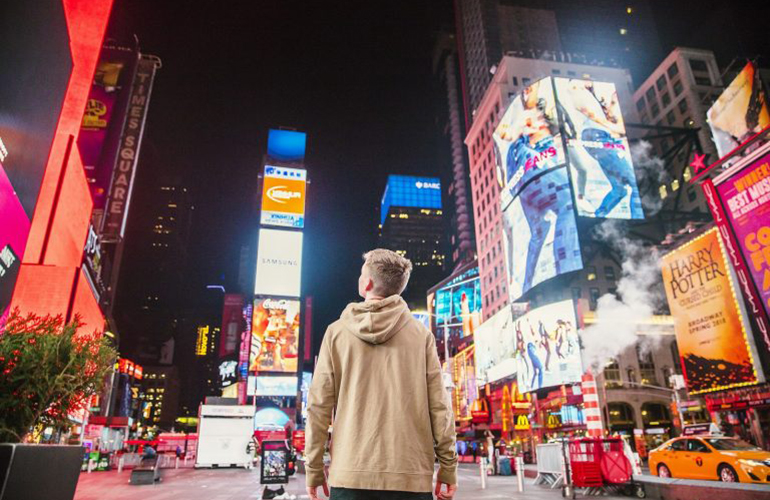Meet us at

on 3rd & 4th October








Video has always been the most preferred form of content consumption in today’s hyper-connected world. Ad spends on video advertising prove that advertisers, brands, publishers, content creators, and marketers choose videos to drive engagement with their target audience.
As we reach the end of 2021, consumers would have spent an average of 100 minutes per person watching online videos. The spends on video advertising will ultimately equal the spends on TV as traditional broadcasters and digital players seek to unite audiences and optimise marketing spends.
Consumers are the focal point and will always be one step ahead of the game as content consumption is always in flux. There are multiple challenges related to engaging a fragmented audience and although video ads are effective, they aren’t always audience-proof. This is because most of the audience online is so used to consuming video that anything that suggests advertising is usually skipped or skimmed over.
Google and Facebook Advertising Network (FAN) control ~ 70% of all digital spending by virtue of scale. New ad formats are released that become instantly available to the entire community of advertisers on their platforms and gain demand in no time at all.
It is imperative for publishers and video streaming players to keep track of the trends that influence consumption. If great content is the clincher, then advertiser challengers are equally connected to the consumption of content.
Working with publishers and leading OTT platforms serving content and ads to millions of customers, Voiro is at the forefront of understanding how content (in the form of video) drives ad revenue.
Advertising is increasingly focused on the consumer – meaning more personalized, targeted, and valuable. Re-targeting is not the only answer; consumers move on too quickly. They want the right ad, at the right time, on the right device, right now.
Ads must breach the boundaries of being “just ads”. They must create meaningful, relatable hooks for the viewer and be relevant and contextual. The engagement that an ad creates will have to be in sync with the brand and the narrative that it wants to drive home.
Whether the goal of advertising is to:
Ads will have to target:
Content is increasingly consumed on apps and OTT platforms and viewers are device agnostic. The same viewer may start a show on their smart TV, continue it on their laptops, and then shift to smartphones or tablets, when on the move.
Content publishers need to keep up with the audience and serve not just content but serve intelligent ads. The artificial divide between TV and OTT is converging at warp speed. Apple TV+ is one example of “owning the home.” Apple already owns an ecosystem of hardware, devices, operating systems, a browser, and an app store. With the addition of long-form content on its platform, it has bridged the OTT-TV divide.
The future is going to see a lot more innovation on these lines.
Virtual reality technology has been around for a few years now. After the initial wave of excitement it created, expectations around the technology have been tempered. However, inroads are being made and a lot of companies are experimenting with VR content.
VR advertising is sure to follow suit as the technology matures and the talent around it becomes easily available. While it is easy to imagine a real estate firm or an airline using VR, here’s an interesting campaign from Oreo cookies. Viewers go through a fun journey in a world filled with milk and cocoa, simulating how the irresistible cookie is actually created. Not browser cookies, but the real thing!
It may have seemed like a wild thought a few years ago, but blockchain technology has revolutionized entire industries. One significant advantage of blockchain is the promise of disintermediating a lot of industries and advertising is one of them.
Imagine users being able to sell their validated personal data directly to advertisers in a secure manner. No intermediary to surreptitiously track your online behavior and sell it to the highest bidder. You can control the sharing of your data based on your brand affinity and personal preferences.
Companies like Cybervein are already working on providing businesses, public institutions, and individuals a secure way of sharing data. While this thought may frighten many publishers, it could also be a boon for intelligent ones. The ability to drive first-party data to optimise ad spends. Not that anyone will have a choice, beyond a point!
Voice assistants like Alexa and Siri have made tremendous inroads into consumer homes and people are becoming dependent on them. This is especially true for younger consumers, with research suggesting that people are more likely to use voice search over web/app searches if given a choice. Comscore estimates almost 50% of all searches online to be voice-driven by 2020. As this usage ramps up, there is no doubt that advertising on voice will also grow in scale.
While a lot of consumers may find these ads intrusive, it is only a matter of time before a user-friendly, non-intrusive way of advertising on these services is designed.
Globally, there is growing awareness that advertising will (by and large) become content. Whatever you call it – branded content, native advertising, or advertorials, the companies that thrive will be the ones who create an advertising ecosystem as powerful as the content that drives consumer consumption.
© 2024 Voiro. All rights reserved
